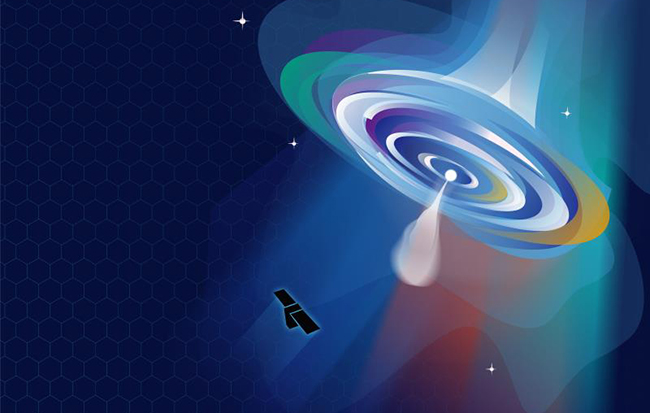On 11 May 2020, Professor Hua Feng and his collaborators reported in Nature Astronomy a re-detection of soft X-ray polarization from the Crab nebula with the space program PolarLight, indicating that this long-awaited window in astronomy has been reopened after more than 40 years since the OSO-8 experiment in the 1970s. More interestingly, PolarLight discovered a time variation of polarization that coincides in time with a glitch of the Crab pulsar. The variation is associated with the pulsar emission but not the nebular emission, suggesting that the pulsar magnetosphere may have altered after the glitch.

PolarLight is a dedicated soft X-ray polarimeter onboard a CubeSat manufactured by Spacety. It was built on the basis of a high-sensitivity technique initially developed by Italian scientists, who are also collaborators of PolarLight. Unlike imaging, timing, and spectroscopy, polarimetry in the standard band of X-ray astronomy is the least explored window, with the previous experiment occurred in the 1970s, mainly due to the lack of high-sensitivity techniques. The PolarLight detector has a small area, similar to the size of a quarter, with an attempt to demonstrate the new technique in space, but surprisingly discovered interesting phenomena associated with the Crab pulsar, implying that X-ray polarimetry is indeed a powerful probe.
Pulsars are the most accurate clocks in the universe. However, their rotational frequency may undergo a sudden change followed by a gradual recovery. This is called a pulsar glitch. The mechanism is still unknown, and may be related to the interior structure of the neutron star. PolarLight detected a time variation of the X-ray polarization right after a glitch of the Crab pulsar on 23 July 2019. This may help constrain neutron star physics and distinguish high-energy emission models of rotation-powered pulsars.
Astronomy is a field of science driven by observations. New observational techniques, also called new windows, are of essential importance. This is the reason why astronomers all over the world are working hard to develop advanced techniques to enable X-ray polarimetry in future astronomy. The technique that is used in PolarLight will be utilized in a NASA mission Imaging X-ray Polarimetry Explorer (IXPE) scheduled in 2021 and a Chinese-European mission concept enhanced X-ray Timing and Polarimetry (eXTP) planned in 2027. More fruitful scientific results are expected in this promising area.
This work is a collaboration between Tsinghua, INFN-Pisa, INAF/IAPS-Rome, IHEP, Peking University, Ningbo University of Technology, North Night Vision, and Spacety.

